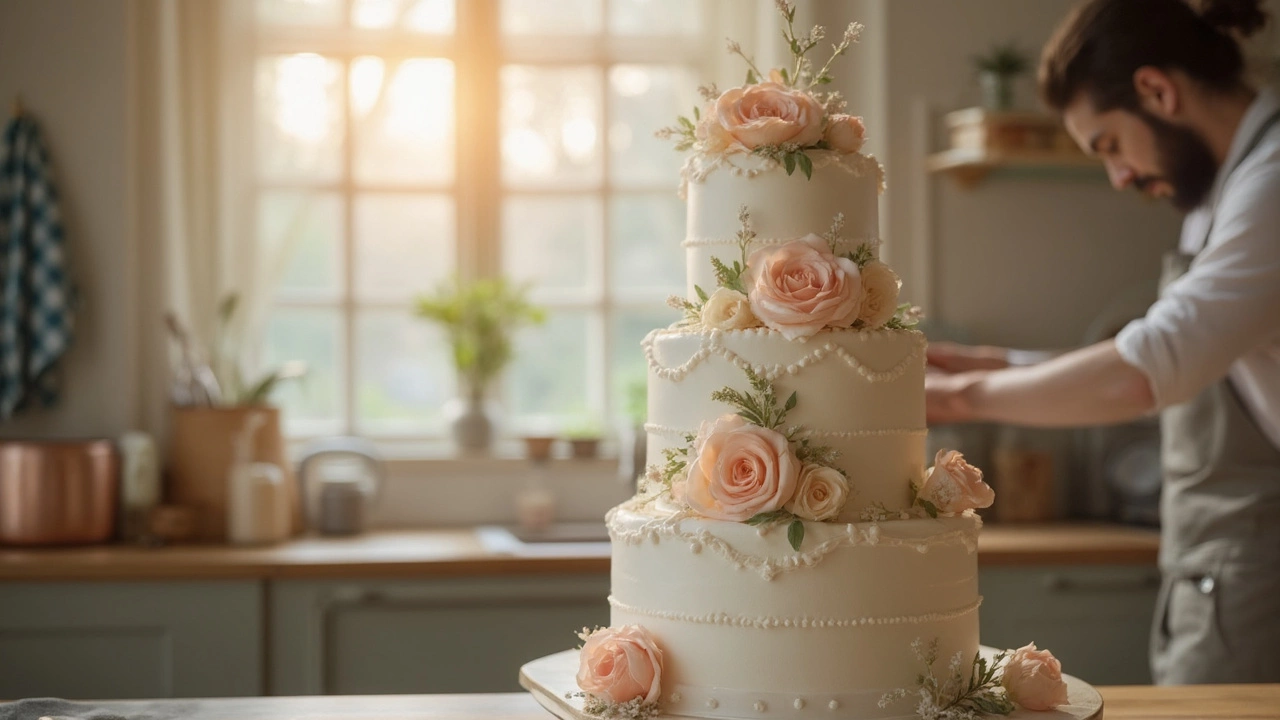Wedding Cake Stacking: Practical Tips for Safe, Stunning Tiered Cakes
Planning a layered wedding cake? It looks gorgeous, but stacking multiple tiers can be tricky. You want it to stay upright, look polished, and survive the transport to the reception. Below are the basics that keep your cake from toppling over and still impressing every guest.
Choosing the right tier sizes
Start with the bottom tier. It should be the biggest and strongest because it holds the weight of every layer above. A common rule is to keep the bottom tier at least 2‑3 inches taller than the next one. This height difference helps distribute weight evenly and makes the cake look proportional.
Next, think about the number of guests. For a small ceremony (under 50 people) two tiers are usually enough. For larger weddings, three tiers work well, but you’ll need a sturdy base and maybe internal supports. Avoid adding too many small tiers; they add weight without adding serving capacity.
Securing and supporting your cake
All professional bakers use dowels or cake rods. These are wooden or metal sticks that go through the middle of each tier, connecting it to the one below. Space them evenly—about every 4‑5 inches around the cake’s circumference—to prevent wobbling.
If you’re doing a DIY cake, invest in a good set of dowels and a cake board that’s larger than the biggest tier. The board acts like a platform and catches any crumbs that fall during assembly. Screw the dowels into the bottom tier first, then insert them into the next tier before you add frosting.
For extra stability, especially with heavy fondant or fruitcake layers, consider a metal cake corset. It’s a lightweight frame that wraps around the cake and holds everything together. Many bakeries have them ready, and they’re easy to hide under a decorative wrap.
Transport is another challenge. Always keep the cake upright in a climate‑controlled vehicle. A flat, level surface with a non‑slip mat is key. If the cake is tall, a hand‑truck with a padded base can help you move it without shaking.
When you arrive at the venue, give the cake a few minutes to settle before cutting. This lets the frosting set and the supports settle into place. A quick check of the dowels and board will catch any loosening before guests start serving.
Finally, think about design. Simple frosting or smooth fondant makes it easier to see where dowels are placed, while intricate decorations can hide them well. If you want a dramatic look, use fresh flowers or sugar art on the outer edges, but keep the central area clear for the supports.
Stacking a wedding cake doesn’t have to be stressful. Pick the right tier sizes, use dowels or a corset, secure a proper board, and transport carefully. Follow these steps, and your cake will stand tall, look beautiful, and stay safe until the very last slice.
Can I Stack a Wedding Cake the Night Before? Practical Tips and Risks
Thinking about stacking your wedding cake the night before? This article breaks down whether it's safe or risky, reveals what the pros actually do, and walks you through how to keep your cake sturdy and fresh for the big day. We talk about filling types, storage, and weather. You'll get real advice, not just theory. If you're a baker or a DIY bride, these tips can save your cake—and your nerves.
View More